Oregon’s Greater Idaho Movement Echoes History of Regional Racism
Instead of fixing Oregon, the Greater Idaho movement seeks to leave it. White supremacists are on board.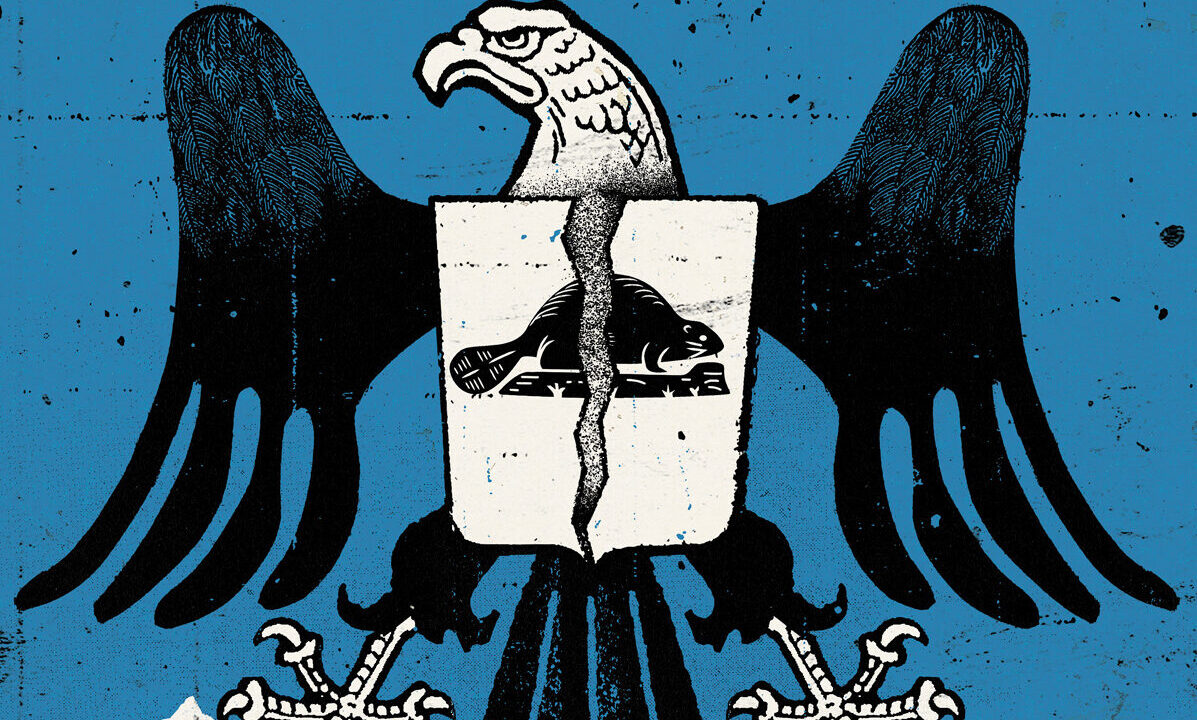 Illustration: Ben Jones/High Country News.
Illustration: Ben Jones/High Country News.
This story was originally published Aug 1, 2023 at High Country News.
In the 164 years since Oregon became a state, many people have tried to redraw its wide rectangular boundaries. Secession movements punctuate its history, spearheaded by groups promising that by breaking away or creating new states, they would be making life better. Safer. Less infringed-upon. More free.
So far, none have succeeded.
The latest movement, Greater Idaho, seeks to slice off almost everything east of the Cascade Mountains and add it to Idaho, uniting the right-leaning portions of the Beaver State with its more conservative neighbor. Nearly two dozen people conceived the idea over pizza and soft drinks in a La Pine, Oregon, restaurant in 2019.
Organizers frame Greater Idaho as a natural byproduct of Oregon’s “urban/rural divide” — shorthand for how populous cities can sway a state’s politics. The idea is far-fetched: In order for eastern Oregon to become Idaho, Oregon’s Democratic-dominated Legislature, Idaho’s Republican-dominated Legislature and the divided United States Congress would all have to agree. Still, the campaign has gained attention, garnering articles in national media outlets; in 2021, The Atlantic called it “Modern America’s Most Successful Secessionist Movement.”
But less attention has been paid to its underlying motives and how they fit into the Northwest’s long history of racially motivated secessionism. Over time, Greater Idaho has slowly revealed itself to be something of a poisoned apple: framed as a gift to discontented rural people, but actually a front for far-right culture war talking points, including racist ones.
The movement’s website and leaders echo Trumpian rhetoric about “illegals” and lambast Oregon for education programs about Black history and public health measures that prioritize communities of color. During the first year of COVID-19 restrictions, in 2020, Mike McCarter, a movement leader, told a regional website that Oregon “protects Antifa arsonists, not normal Oregonians.” He added, “It prioritizes one race above another for vaccines and program money and in the school curriculum, and it prioritizes Willamette Valley” — where Portland is located — “above rural Oregon.”
Over time, Greater Idaho has slowly revealed itself to be something of a poisoned apple: framed as a gift to discontented rural people, but actually a front for far-right culture war talking points, including racist ones.
In 2021, Eric Ward, then-executive director of Western States Center, a Portland-based pro-democracy think tank, accused Greater Idaho of simply reviving what the Oregon Capital Insider described as a “white ethno-state dream.” The center’s advocacy arm later sponsored anti-Greater Idaho TV ads.
McCarter pushed back: “Calling us racist seems to be an attempt to associate a legitimate, grass-roots movement of rural Oregonians with Hollywood’s stereotypes of low-class, ignorant, evil, ugly, dirty Southerners,” he said in a statement posted alongside photographs of Ward and Western States Center’s board — who are all Black — and the center’s staff. “(Ward’s) words mark anyone with a Greater Idaho sign or a Greater Idaho hat as targets for violent antifa members.”
Meanwhile, prominent racists were fired up about the idea. White nationalist leader Jared Taylor touted it on his podcast: “People who live out in the continents of rural sanity, they don’t want to be governed by the people who live on those islands of urban insanity,” he said. The audio was repurposed for a video on the far-right social network Gab — where former Fox News host Tucker Carlson is considered a trusted media source and no one would get banned for posting a swastika. Users buzzed about Greater Idaho.
Articles and clips on the anti-immigrant website VDARE also promoted it. One blog post said that Greater Idaho “would free eastern Oregonians from the anti-white, totalitarian leftists who rule the state.” A video warned that Oregon “won’t protect its residents from thugs, illegal aliens, communist rioters and other undesirables.”
Because Greater Idaho is unlikely to become a reality, “people dismiss it,” said Stephen Piggott, a program director with Western States Center. And that, he believes, is dangerous: “People are not connecting the dots,” he said. “The people who want to create a white homeland are backing it.”
When Oregon was admitted to the Union, its Constitution contained a clause banning Black people from moving there — the only state with such a provision. Even before its borders were drawn, people floated the idea of creating a slave-owning haven in what is now southern Oregon and Northern California, branding it the “Territory of Jackson,” after President Andrew Jackson. Confederate sympathizers considered several of the new state’s southernmost counties “the Dixie of Oregon.” Later, in the mid-20th century, the State of Jefferson movement emerged in the same area; it nixed owning slaves, but retained a slave owner as its namesake. Driven by people who felt they were over-taxed by Oregon and California, the movement still has supporters.
The secessionist torch passed from generation to generation. The phrasing changed, but the talking points remained the same.
In 1986, after migrating from California to North Idaho to build a racist refuge for his group the Aryan Nations, white supremacist Richard Butler hosted his annual Aryan World Congress — a national gathering of neo-Nazis, racist skinheads and members of the Ku Klux Klan. They agreed that, in the not-so-distant future, U.S. cities would become so overrun by minority groups that white people would be forced to flee to an “Aryan homeland” they envisioned in Washington, Oregon, Idaho, Montana and Wyoming.
Butler died in 2004. Eventually, his compound was fully bulldozed and his acolytes scattered, but his ideas remained and evolved. In 2011, survivalist blogger and New York Times best-selling novelist James Wesley, Rawles floated an idea called “The American Redoubt.” (According to the Anti-Defamation League, some individuals add errant punctuation to their names to distinguish their first and middle names from their government-imposed or family names.) He encouraged Christians of any race who felt alienated by urban progressive politics to relocate to the Northwest, writing: “I’m inviting people with the same outlook to move to the Redoubt states.” Recently, the Idaho Freedom Foundation, a right-wing political think tank, echoed this. “Are you a refugee from California, or some other liberal playground?” it asked on its website, welcoming those newcomers as “true” Idahoans.
Starting in 2015, then-Washington state Rep. Matt Shea, R, pushed to sever his state at the Cascades, rebranding the rural eastern half as “The State of Liberty,” which advocated against same-sex marriage, marijuana and environmental regulations. Shea distributed a document calling for Old Testament biblical law to be enacted. On its website, Liberty State organizers suggest that if Liberty becomes a reality, they would be open to merging with Greater Idaho.
Within the last two years, Vincent James Foxx, a white nationalist associated with the Rise Above Movement — a group the Southern Poverty Law Center described as “an overtly racist, violent right-wing fight club”— relocated to Post Falls, Idaho. “A true, actual right-wing takeover is happening right now in the state of Idaho,” Foxx declared.
What all these secessionist ideas have in common, Neiwert said, is that they are anti-democracy. Greater Idaho’s organizers “don’t really want to put up with democracy,” he said.
Greater Idaho is driven by ideas similar to those behind past movements: fleeing cities, lauding traditionalist Christian values, pushing a far-right political agenda. “Ultimately, I think in some ways, Butler’s vision is coming true,” said David Neiwert, an expert on far-right extremism and the author of The Age of Insurrection.
What all these secessionist ideas have in common, Neiwert said, is that they are anti-democracy. Greater Idaho’s organizers “don’t really want to put up with democracy,” he said. “They don’t want to deal with the fact that if you want to have your position win in the political arena, you have to convince a bunch of people. They just want to take their ball and create a new playground.”
Gary Raney, former sheriff of Idaho’s Ada County, where Boise is located, disliked seeing his state “being advertised as an extremist haven.” In response, last year he founded Defend and Protect Idaho, a political action committee that fights political extremism. “Everybody’s entitled to their opinion, and I welcome that discourse and discussion,” he said. “But when people are wanting to overthrow our government or our republic or our democracy … there’s nothing healthy about that.”
In 2023, the Idaho House of Repre-sentatives passed a nonbinding proposal calling for formal talks with the Oregon Legislature about moving the border, though no such talks occurred. Raney sees Greater Idaho as “driving a wedge” in rural communities, using resentment over urban power to recruit people to more extreme causes. “The good people of Oregon who are doing this for the right reasons: Be realistic that it’s never going to happen, and be more influential in the Oregon Legislature,” Raney said. “For the extremists who are simply using this to divide and create their right-wing haven?
“Stay the hell out of Idaho,” he said. “Because we don’t want you.”
By greater Idaho spokesman Matt McCaw’s telling, the movement is born out of opposites that run as deep as the land itself. “The west side of the state is urban. It’s green, it’s very left-leaning,” he said in an interview with High Country News. “The east side of the state is conservative, it’s rural, it’s very dry. It’s a different climate.
“Give me a topic, and I can tell you that the people in Portland feel one way about it and vote one way, and the people in eastern Oregon or rural Oregon feel one way about it and vote differently,” he said. “Stereotype is a word that maybe gets a bad rap.”
To become Idahoans, McCaw explained, would mean “to have traditional values that focus on faith, freedom, individualism and tradition.” He pointed to Oregon’s liberal voting record on gun control, abortion and drug legalization. “Broadly, the people (in eastern Oregon) are very like-minded, just like broadly the people in the Portland metro area are very like-minded,” he said. “On these issues, Portland has a very distinctly different set of values than rural America.”
Speaking of differences, there are big ones between Idaho and Oregon. In rural Oregon counties, minimum wage is $12.50; in Idaho, it’s $7.25. Marijuana is legal in Oregon; in Idaho, possession can be punishable with jail time. In Idaho, abortion is essentially illegal; earlier this year, Oregon Gov. Tina Kotek announced the state had acquired a three-year stockpile of mifepristone, a drug used for medical abortions. While there are no detailed plans on how Greater Idaho would bridge these gaps, McCaw said that “all of these things can be worked out.”
But is he upset by the white supremacist support for Greater Idaho? “I think that the extremist thing gets overblown,” he said. “In any group, there are going to be extremists that latch on, no matter if you want them or not.”
Nella Mae Parks, an eastern Oregonian, was raised in Union County, Oregon, and runs a farm there. She doesn’t recognize Greater Idaho’s portrayal of her home. “I think it’s a bought-and-paid-for narrative about what it means to be a rural American,” she said.
“I can understand why people feel left behind or left out, or in other ways sort of alienated from the more urban centers of power in Oregon. I think a lot of us feel that way, regardless of our politics.”
On the day Parks spoke to High Country News, she and a dozen other eastern Oregonians had just returned home after a 12-hour round-trip drive to Salem, Oregon’s capital, in an effort to get legislators to address nitrate water pollution. In 2022, commissioners in nearby Morrow County declared a state of emergency after high levels of nitrate — which is common in fertilizer and can cause cancer and respiratory issues — were found in domestic wells.
Parks’ group came home unsure if they had accomplished anything. “The governor won’t meet with us on our issues, some of our own legislators don’t care about our issues,” Parks said. “I can understand why people feel left behind or left out, or in other ways sort of alienated from the more urban centers of power in Oregon. I think a lot of us feel that way, regardless of our politics.
“When we get blown off, that is widening this rural/urban divide,” she said.
But Parks’ solution is not to leave the state; it’s to fix it. And in May, it seemed like the effort had been worth it: Kotek told eastern Oregon leaders that she had asked the state for $6.2 million to address the nitrate issue. “It has taken a while to get here,” she admitted.
Gwen Trice, who grew up in eastern Oregon, is the executive director of the Maxville Heritage Interpretive Center, a museum in Joseph dedicated to the multicultural histories of Oregon’s loggers. She won’t call Greater Idaho a movement, or even an idea. Instead, she calls it “a notion.”
Trice founded the museum when she realized that the stories of the region’s Black loggers — including her father — had never been told. The logging industry once thrived in Maxville, now a ghost town. The Bowman-Hicks Lumber Company recruited skilled loggers from the South, regardless of race, despite laws that had long excluded Black people from settling in Oregon. “We’ve worked hard to tell, honor and even embrace the messy part of our history,” she said, “and really tell a truthful story.”
Speaking as a historian, Trice said there’s no difference between Greater Idaho and the previous, more explicitly racist movements. “It’s repackaged,” she said. “I don’t think that anything is being hidden, and it’s appealing to a certain group of people only.
“It’s symbolic of dominant culture saying, ‘We know what’s better for you than you do.’”
Pauline Braymen, an 85-year-old retired rancher in Harney County, called Greater Idaho ideological, and impractical — a way of going back in time. “The urban/rural divide is an emotionally based state of mind that distorts reality,” she said. “The changes and steps forward in our quality of life in the 20th century, during my lifetime, were amazing. I just see all of that progress and vision being destroyed.
“If I wanted to live in Idaho,” she added, “I would move there.”
On a map of the Northwest, Washington and Oregon nestle together in semi-rectangular sameness. Divided in part by the Columbia River, Washington eases its southern border into the curve of Oregon’s north, like two spoons in a drawer. But next door, Idaho asserts itself like an index finger declaring “Aha!” or a handgun aimed at the sky for a warning shot.
McCaw, the Greater Idaho spokesman, often says that borders are imaginary lines: “a tool that we use to group similarly minded people, like-minded people, culturally similar people.”
“That whole statement is absolute nonsense,” said former Idaho State Historian Keith Petersen, who wrote a book about the borders in question, titled Inventing Idaho: The Gem State’s Eccentric Shape. The Idaho-Oregon border, he said, simply made the most geographical sense.
In 1857, two years before statehood, delegates from across Oregon Territory gathered to determine the new state’s edges. They decided that Oregon’s border should run from Hells Canyon south into the belly of the Snake and Owyhee rivers, then drop straight down to the 42nd Parallel. Only one delegate championed the Cascade Mountains as the new state’s easternmost edge, fearful that people too far from the capital wouldn’t be effectively represented.
“This grievance that ‘the population is over there, it’s so far to get there, we’ll never have power and influence,’” Petersen said, “hasn’t changed.”
Earlier this year, at a virtual town hall, two of eastern Oregon’s own instruments of power and influence in Salem — elected Republican lawmakers — grumbled that Greater Idaho was actually siphoning authority away from them, making it hard to effectively govern.
“The Greater Idaho people keep saying we need to do this,” said Oregon State Sen. Lynn Findley, who represents people from the Cascades to Idaho. Greater Idaho supporters have proposed ballot measures across Oregon that would force county officials to hold regular discussions about joining Idaho. None of the measures actually call for moving the border. And support hasn’t exactly been overwhelming; the most recent measure, in Wallowa County, passed by just seven votes. Still, by spring 2023, voters in 12 eastern Oregon counties had approved similar measures. “I’m no longer working on gun bills, abortion bills and other infrastructure bills,” Findley said. “It’s taken time away that I think would be better spent working on tax issues, and a whole plethora of other stuff.”
“We understand the intent and we understand the frustration,” agreed Rep. Mark Owens. “But I’m not going to apologize for having not given up on Oregon.”
But by May, it seemed Findley was, in a way, giving up. He was one of a dozen Republican senators and one Independent who walked out of the Statehouse for several weeks to protest bills on abortion access, gender-affirming care and raising the minimum age to purchase semi-automatic rifles.
In the midst of the walkout, just before Memorial Day, as the rhododendrons in Northeast Portland erupted in magenta blooms, McCaw, in a blue suit and crisp white shirt, sat in front of a live audience at the Alberta Rose Theatre. He was participating in a public discussion hosted by Oregon Humanities, which facilitates statewide conversations “across differences of background, experience and belief.” The event was ostensibly about borders, but by the end it was clear that it was really about Greater Idaho. McCaw repeated his talking points: Eastern Oregonians and western Oregonians are fundamentally different; borders create tension.
“We have a permanent political minority on the east side of the state,” he said.
Beside him were two other panelists, who shifted uncomfortably in their seats. One was Alexander Baretich, who designed the Cascadia flag: a blue-, white- and green-striped banner with a Douglas Fir at its center. The flag represents the larger Cascades and Columbia River Basin bioregion, “a living space — a life space,” he explained. “Once you get into that consciousness that you are interconnected with everything around you … those political borders dissolve.”
It’s the antithesis of Greater Idaho: Cascadia unites, Greater Idaho divides. “That flag is to create that consciousness that we are one with the planet,” Baretich said. McCaw furrowed his brow.
The moderator, Adam Davis, interjected: “I actually get viscerally uncomfortable … when I hear, ‘There’s people on the east side are one way, people on the west side are another way.’” Tension, he said, is difficult, but crucial. “That tension holds what our democracy, if it’s going to be an inclusive democracy, kind of requires.”
McCaw said eastern Oregonians, in 2020, didn’t feel like Oregon was being inclusive when it issued statewide indoor mask mandates. It “super-charged our movement,” he said. “The people on the east side of the state did not want those restrictions.”
“To form a movement because other people aren’t feeling like they have a voice in the state, while completely disregarding this reality and how effective it’s been towards Indigenous people? That is the gaslighting part.”
“I’m just going to straight-up disagree,” said the other panelist, Carina Miller, a member of the Confederated Tribes of Warm Springs and chair of the Columbia River Gorge Commission. Miller lives east of the Cascades on the Warm Springs Reservation, which McCaw told High Country News would be excluded from Greater Idaho, along with the city of Bend, because of their liberal politics.
Throughout the night, Miller repeated one phrase — “societal gaslighting.” She described growing up Indigenous in Oregon, where she received an education that normalized racist policies toward tribes, and where a boarding school built to assimilate Native youth still operates.
“To form a movement because other people aren’t feeling like they have a voice in the state, while completely disregarding this reality and how effective it’s been towards Indigenous people? That is the gaslighting part,” she said. Miller asked McCaw a question: “Do you really think that people who are advocating for Greater Idaho are the most disenfranchised people in these communities?”
People clapped before McCaw could respond.
“A strong majority of people in eastern Oregon do want this to move forward,” he said.
“But is the answer yes or no?” Miller pressed. “Are they the most disenfranchised?”
“I have no idea,” McCaw said.
Miller got the last word: She encouraged people to “hold onto each other and work it out.” The room erupted in applause.
McCaw didn’t join in. Instead, he sat perfectly still, his hands clasped tightly in his lap.
Your support matters…Independent journalism is under threat and overshadowed by heavily funded mainstream media.
You can help level the playing field. Become a member.
Your tax-deductible contribution keeps us digging beneath the headlines to give you thought-provoking, investigative reporting and analysis that unearths what's really happening- without compromise.
Give today to support our courageous, independent journalists.
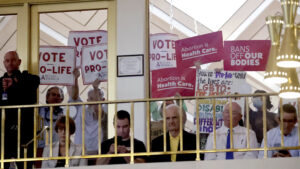
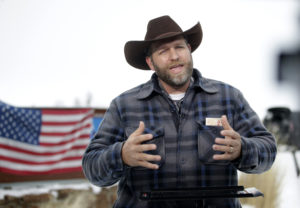
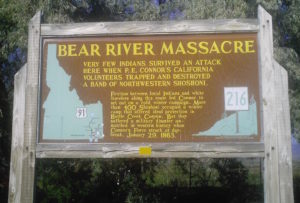
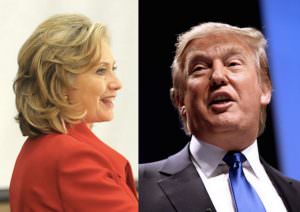
You need to be a supporter to comment.
There are currently no responses to this article.
Be the first to respond.